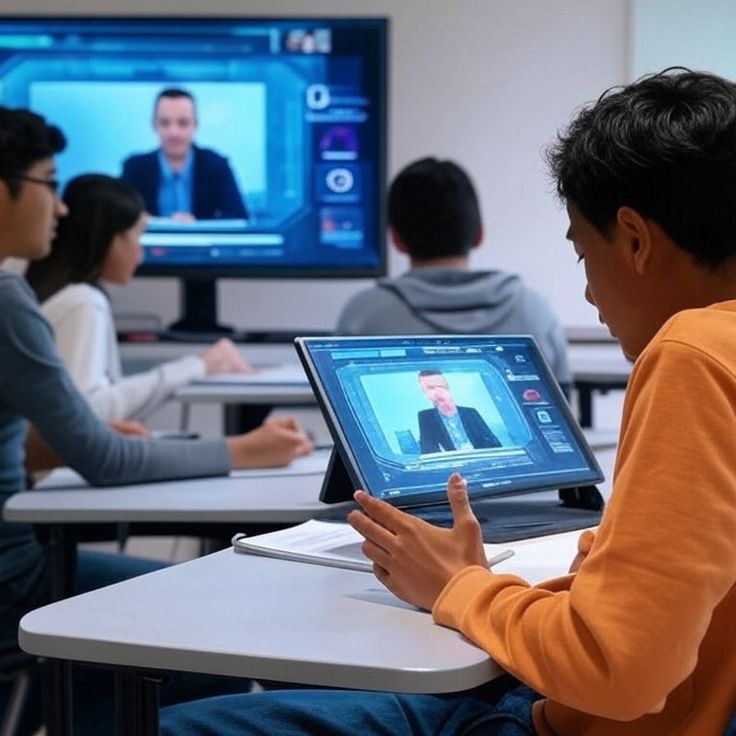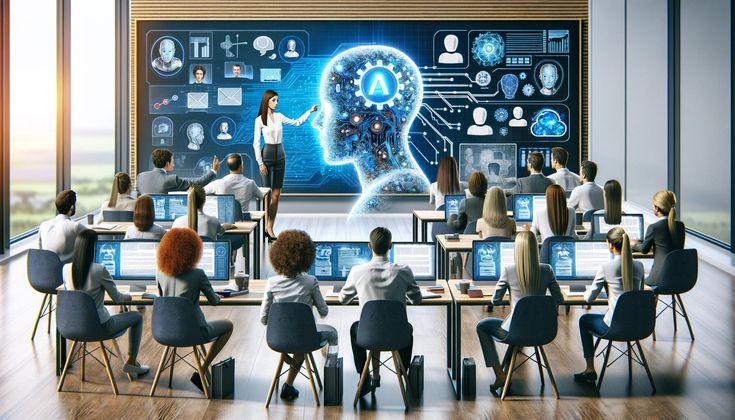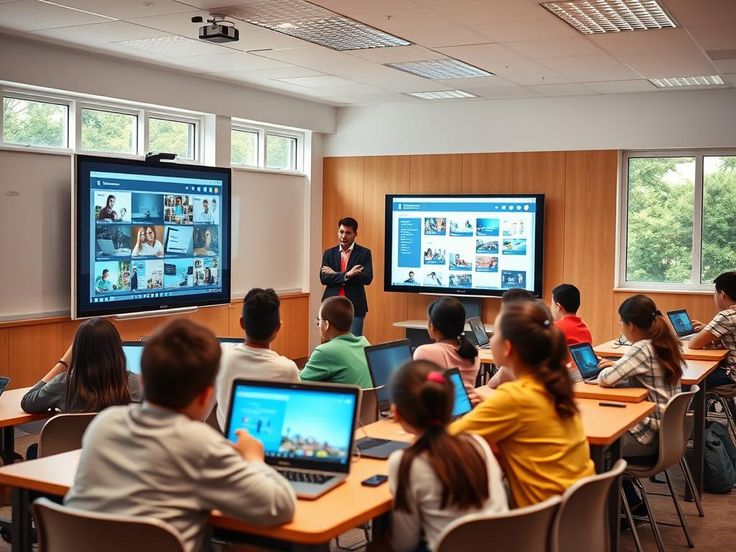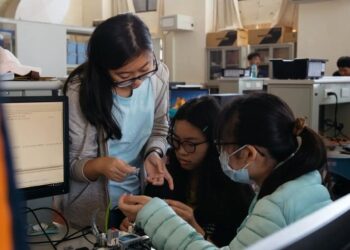Understanding Virtual Classrooms and Their Core Features
Virtual classrooms represent a digital evolution of traditional learning environments. At their essence, they are online platforms that simulate the interactive aspects of in-person classes through video conferencing, shared documents, and real-time collaboration tools.
Unlike static online courses, these setups allow for live interactions, fostering a sense of community among participants separated by vast distances.
One key feature is synchronous learning, where instructors and learners engage in real-time sessions. This mimics the immediacy of a physical classroom, enabling questions, discussions, and group activities. Asynchronous elements, such as recorded lectures and forums, provide flexibility for those in different time zones. Platforms like Zoom, Google Classroom, and Microsoft Teams have become staples, offering features such as screen sharing, breakout rooms, and integrated quizzes.
The technology behind these systems includes high-speed internet, webcams, and cloud-based storage. Artificial intelligence is increasingly integrated, with tools that automate attendance, grade assignments, or even translate languages in real-time. This technological backbone ensures that geographic barriers—once insurmountable due to travel costs, visa restrictions, or remote living—become irrelevant.
The Historical Context of Geographic Barriers in Education
For centuries, education has been tied to geography. In ancient times, scholars traveled to centers like Alexandria or Athens to access knowledge. During the industrial era, schools were built in urban areas, leaving rural populations underserved. Even in the 20th century, higher education often required relocating to specific cities or countries, limiting opportunities for those in isolated regions.
Global disparities exacerbate this issue. In developing nations, students in remote villages might walk miles to attend school, only to find inadequate resources. International students face additional hurdles like cultural adaptation and financial burdens. According to various educational reports, millions of children worldwide are out of school due to geographic inaccessibility, particularly in areas affected by conflict or natural disasters.
The advent of the internet in the late 20th century began to chip away at these barriers. Early online forums and email exchanges laid the groundwork, but it wasn’t until broadband became widespread that virtual classrooms truly emerged. The COVID-19 pandemic accelerated this trend, forcing a global shift to remote learning and proving its viability on a massive scale.
Key Benefits of Virtual Classrooms in Eliminating Location Constraints
Virtual classrooms offer numerous advantages that directly address geographic challenges. Here are some of the most significant ones, explained in detail:
A. Accessibility for Remote and Underserved Areas Students in rural or isolated locations no longer need to commute long distances. A farmer’s child in a remote African village can join a class taught by an expert in Europe, provided there’s reliable internet. This levels the playing field, allowing talent to flourish irrespective of postcode.
B. Cost-Effective Learning Opportunities Traditional education often involves relocation expenses, tuition fees tied to prestigious institutions, and living costs. Virtual setups reduce these by eliminating the need for physical infrastructure. Learners save on travel and accommodation, making education more affordable and inclusive.
C. Diverse Cultural Exchange By connecting people from different continents, virtual classrooms promote global understanding. A student in Asia can collaborate on a project with peers in South America, enriching perspectives and fostering empathy. This cultural melting pot prepares individuals for a globalized workforce.
D. Flexibility in Scheduling Time zones can be a barrier, but asynchronous features allow participation at convenient times. Live sessions can be recorded, ensuring no one misses out due to geographic time differences.
E. Specialized Education Without Relocation Access to niche courses, such as advanced robotics or rare languages, is no longer limited to specific universities. Learners can enroll in programs from top institutions worldwide without leaving home.
F. Support for Lifelong Learning Adults balancing work and family can pursue further education virtually, breaking the cycle of geographic immobility that often hinders career advancement.
G. Environmental Benefits Reducing the need for travel lowers carbon emissions, contributing to sustainability. This indirect benefit aligns with global efforts to combat climate change, making virtual education an eco-friendly choice.
These benefits collectively transform education from a localized privilege to a universal right, empowering individuals and communities alike.
Implementation Strategies for Effective Virtual Classrooms
To maximize the potential of virtual classrooms, careful planning is essential. Educators and institutions must adopt strategies that ensure engagement and equity.
Start with robust infrastructure. Reliable internet is crucial; governments and organizations should invest in broadband expansion, especially in rural areas. Devices like laptops or tablets should be subsidized for low-income families.
Curriculum design plays a pivotal role. Courses should blend interactive elements with self-paced modules. For instance, using gamification—such as points and badges—can boost motivation in a digital setting.
Teacher training is another cornerstone. Instructors need skills in digital pedagogy, including managing online discussions and using analytics to track student progress. Professional development programs can bridge this gap.
Inclusivity measures are vital. Features like closed captioning, screen readers, and multilingual support ensure accessibility for diverse learners, including those with disabilities.
Finally, assessment methods must evolve. Instead of traditional exams, virtual classrooms can use portfolios, peer reviews, and AI-driven evaluations to gauge understanding fairly.
Challenges and Solutions in Adopting Virtual Classrooms
Despite their advantages, virtual classrooms aren’t without hurdles. Addressing these proactively can enhance their effectiveness.
A primary challenge is the digital divide. Not everyone has access to high-speed internet or devices. Solutions include public-private partnerships to provide affordable connectivity and device loans. Initiatives like those from UNESCO aim to bridge this gap globally.
Engagement can wane in virtual settings due to screen fatigue or distractions. To counter this, incorporate interactive tools like polls, virtual reality simulations, and collaborative whiteboards. Short, focused sessions with breaks can maintain attention.
Privacy and security concerns arise with online data sharing. Implementing strong encryption and compliance with regulations like GDPR protects users. Educating participants on digital literacy helps mitigate risks.
Cultural and language barriers persist. AI translation tools and culturally sensitive content can foster inclusivity. Encouraging diverse instructor teams ensures representation.
Equity in education quality is another issue. Virtual classrooms might lack the hands-on experience of labs or field trips. Hybrid models, combining online theory with local practical sessions, offer a balanced approach.
By tackling these challenges head-on, virtual classrooms can become a reliable alternative to traditional methods.
Case Studies: Real-World Success Stories
Examining practical examples illustrates the transformative power of virtual classrooms.
In India, the DIKSHA platform has connected millions of students in remote areas to quality education. Teachers upload resources, and AI personalizes learning paths, significantly improving literacy rates in underserved regions.
Australia’s School of the Air uses radio and now video links to educate children in the outback. This long-standing program has evolved with technology, allowing interactive lessons that overcome vast distances.
During the pandemic, universities like Harvard offered free online courses via edX, attracting global participants. This not only expanded access but also generated data on effective virtual teaching methods.
In Africa, initiatives like the African Virtual University partner with international institutions to deliver degrees online, enabling professionals to upskill without emigrating.
These cases demonstrate that with commitment, virtual classrooms can bridge geographic gaps effectively.
The Role of Technology in Enhancing Virtual Learning
Advancements in technology are continually refining virtual classrooms. Virtual reality (VR) and augmented reality (AR) create immersive experiences, such as virtual field trips to historical sites, eliminating the need for physical travel.
AI-driven personalization tailors content to individual needs, adapting difficulty levels based on performance. Chatbots provide instant support, simulating a tutor’s presence.
Blockchain technology secures credentials, allowing seamless transfer of credits across borders. This facilitates global mobility in education without bureaucratic hurdles.
5G networks promise ultra-low latency, enabling real-time collaborations that feel as natural as in-person interactions. As these technologies mature, the line between virtual and physical learning blurs further.
Future Prospects: Evolving Beyond Current Limitations
Looking ahead, virtual classrooms are poised for exponential growth. Integration with metaverses could create persistent digital campuses where avatars interact in shared spaces.
Policy changes will be crucial. Governments should prioritize digital education in national strategies, funding infrastructure and research.
Collaboration between tech companies and educators will drive innovation. Open-source platforms can democratize tools, ensuring affordability.
Sustainability will factor in, with energy-efficient data centers supporting eco-friendly operations.
Ultimately, virtual classrooms could eradicate educational inequality, fostering a world where knowledge knows no borders.
Integrating Virtual Classrooms into Broader Educational Systems
To fully realize their potential, virtual classrooms must integrate with existing systems. Hybrid models blend online and offline elements, offering the best of both worlds.
Partnerships with industries can provide real-world applications, such as virtual internships that transcend geography.
Community involvement ensures relevance; local leaders can adapt content to cultural contexts.
Monitoring and evaluation through data analytics will refine approaches, ensuring continuous improvement.

Ethical Considerations in Virtual Education
Ethics must guide this evolution. Ensuring data privacy prevents misuse. Promoting digital wellness addresses mental health impacts from prolonged screen time.
Equity demands that advancements don’t widen gaps; targeted interventions for marginalized groups are essential.
Transparency in AI algorithms avoids biases, ensuring fair assessments.
By upholding ethical standards, virtual classrooms can be a force for good.
Conclusion: A Borderless Future for Learning
Virtual classrooms are more than a technological trend; they are a catalyst for global equity in education. By reducing geographic barriers, they empower individuals to pursue knowledge freely, driving personal and societal progress. As we embrace this digital shift, the focus should be on inclusivity, innovation, and sustainability. The journey toward a truly accessible education system is ongoing, but the foundation laid by virtual classrooms promises a brighter, more connected future.













